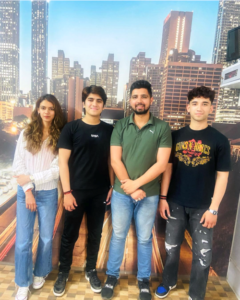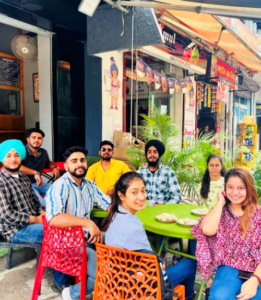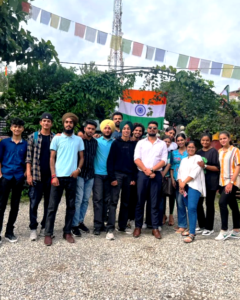PART 1 Questions 1-10
Questions 1-5
Complete the notes below.
Write ONE WORD ONLY for each answer.
Working at Milo’s Restaurants
Benefits
- 1 provided for all staff
- 2 during weekdays at all Milo’s Restaurants
- 3 provided after midnight
Person specification
- must be prepared to work well in a team
- must care about maintaining a high standard of 4
- must have a qualification in 5
Question 6-10
Complete the table below.
Write ONE WORD AND/ OR A NUMBER for each answer.
| LOCATION | JOB TITLE | RESPONSIBILITIES INCLUDED | PAY AND CONDITIONS |
|---|---|---|---|
| 6 Street | Breakfast supervisor | Checking portions, etc. are correct Making sure 7 is clean | Starting Salary 8 £ per hour Start work at 5.30 am |
| City Road | Junior chef | Supporting senior chefs Maintaining stock and organising 9 | Annual salary £ 23,000 No work on a 10 once a month |
Table for IELTS Cambridge Book 18 Listening Test 2
PART 2 Questions 11-20
Questions 11 and 12
Choose TWO letters, A-E.
What are the TWO main reasons why this site has been chosen for the housing development?
- It has suitable geographical features.
- There is easy access to local facilities.
- It has good connections with the airport.
- The land is of little agricultural value.
- It will be convenient for workers.
Questions 13 and 14
Choose TWO letters, A-E.
Which TWO aspects of the planned housing development have people given positive feedback about?
- the facilities for cyclists
- the impact on the environment
- the encouragement of good relations between residents
- the low cost of all the accommodation
- the rural location
Questions 15-20
Label the map below.
Write the correct letter, A-l, next to Questions 15-20.

- ABCDEFGHI School
- ABCDEFGHI Sports centre
- ABCDEFGHI Clinic
- ABCDEFGHI Community centre
- ABCDEFGHI Supermarket
- ABCDEFGHI Playground
PART 3 Questions 21-30
Questions 21-24
Choose the correct letter, A, B or C.
21. Why do the students think the Laki eruption of 1783 is so important?
- It was the most severe eruption in modern times.
- It led to the formal study of volcanoes.
- It had a profound effect on society.
22. What surprised Adam about observations made at the time?
- the number of places producing them
- the contradictions in them
- the lack of scientific data to support them
23. According to Michelle, what did the contemporary sources say about the Laki haze?
- People thought it was similar to ordinary fog.
- It was associated with health issues.
- It completely blocked out the sun for weeks.
24. Adam corrects Michelle when she claims that Benjamin Franklin
- came to the wrong conclusion about the cause of the haze.
- was the first to identify the reason for the haze.
- supported the opinions of other observers about the haze.
Questions 25 and 26
Choose TWO letters, A-E.
Which TWO issues following the Laki eruption surprised the students?
- how widespread the effects were
- how long-lasting the effects were
- the number of deaths it caused
- the speed at which the volcanic ash cloud spread
- how people ignored the warning signs
Questions 27-30
What comment do the students make about the impact of the Laki eruption on the following countries?
Choose FOUR answers from the box and write the correct letter, A-F, next to Questions 27-30.
Comments
- This country suffered the most severe loss of life.
- The impact on agriculture was predictable.
- There was a significant increase in deaths of young people.
- Animals suffered from a sickness.
- This country saw the highest rise in food prices in the world.
- It caused a particularly harsh winter.
Countries
- ABCDEF Iceland
- ABCDEF Egypt
- ABCDEF UK
- ABCDEF USA
PART 4 Questions 31-40
Complete the notes below.
Write ONE WORD ONLY for each answer.
Pockets
Reason for choice of subject
- They are 31 but can be overlooked by consumers and designers.
Pockets in men’s clothes
- Men started to wear 32 in the 18th century.
- A 33 sewed pockets into the lining of the garments.
- The wearer could use the pockets for small items.
- Bigger pockets might be made for men who belonged to a certain type of 34 .
Pockets in women’s clothes
- Women’s pockets were less 35 than men’s.
- Women were very concerned about pickpockets.
- Pockets were produced in pairs using 36 to link them together.
- Pockets hung from the women’s 37 under skirts and petticoats.
- Items such as 38 could be reached through a gap in the material.
- Pockets, of various sizes, stayed inside clothing for many decades.
- When dresses changed shape, hidden pockets had a negative effect on the 39 of women.
- Bags called ‘pouches’ became popular, before women carried a 40 .








